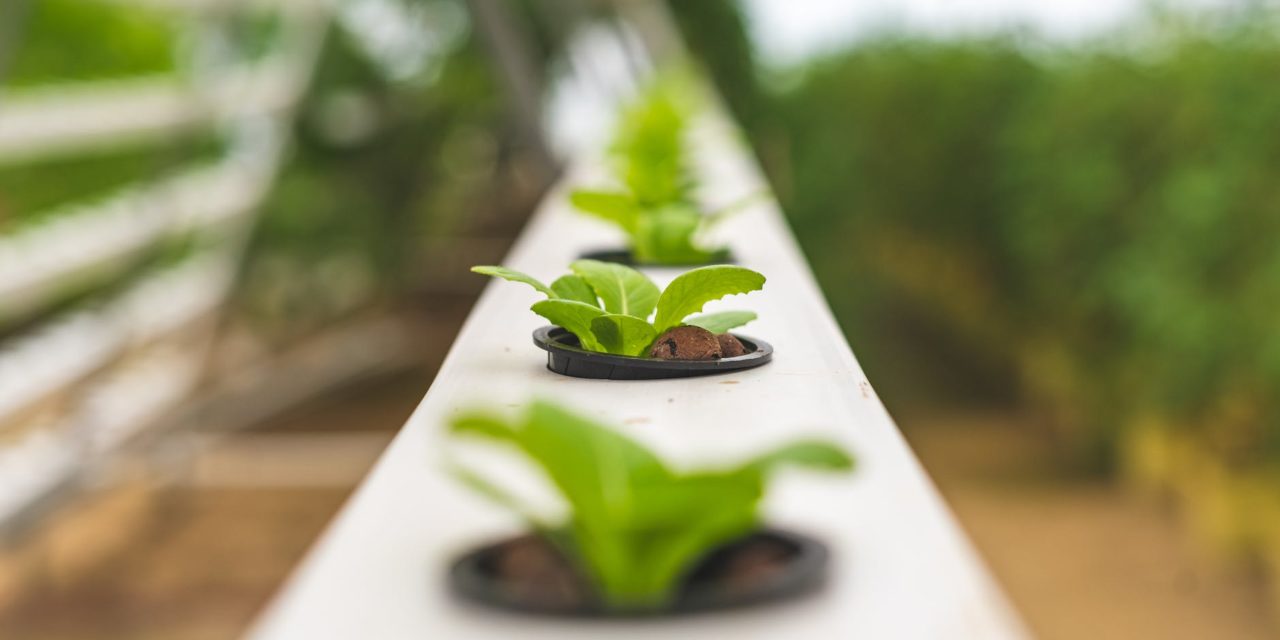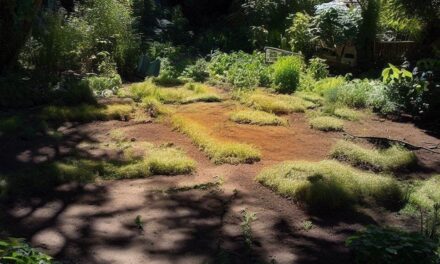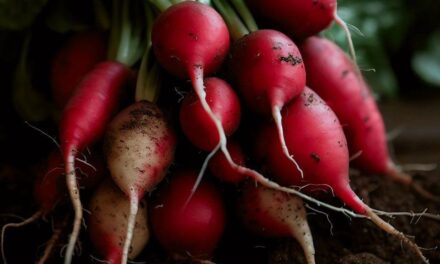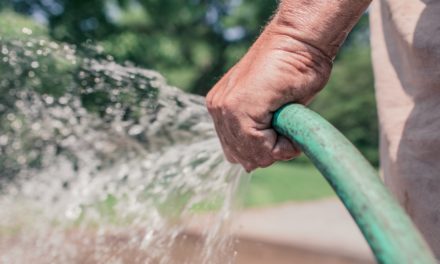Hydroponics is the process of growing plants without any soil. Actually, in this method, we provide good nutrition through water and the plants get all the nutrition through the nutrients supplied directly to their roots.
Many plants are grown hydroponically, such as vegetables, fruits, and herbs, including strawberry, tomatoes, lettuce, and peppers. Hydroponic systems range from bookshelf to room size, or sufficient to fill an entire greenhouse.
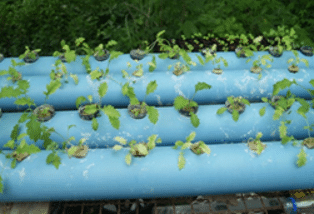
Step by step guide to get started with hydoponics for beginners
Creating a hydroponic system is easy, but there are some essential requirements of location and materials to build it. Let’s have a look at the set up of a hydroponic system at home.
1. Determine the Location
A hydroponic system must be placed in an enclosed facility. We can set it up in a greenhouse, basement, or the outside home patio. The floor should be level to ensure that the plants in the system receive equal amounts of water and nutrients. If you put the system outside, make sure it’s protected from the weather by putting up a wind barrier and checking the water levels more frequently due to evaporation. Also keep in mind that freezing temperatures are not suitable for the setup.
First of all, the initial step is to assemble the hydroponic system.
2. Material and Technique
The system consists of six growth tubes composed of six different types of plastic PVC pipes, a PVC stand, trellis, a 50-gallon nutrient tank, a pump, and a manifold. The tank is situated beneath a six-person table. The pump sits inside the tank, pushing nutrients up to the plants through a network of smaller PVC pipes and plastic tubes. A drainpipe runs from each growth tube back to the tank. The manifold is positioned on top of the pipes and delivers pressured water to the tubes.
Water is pumped through a square of PVC the manifold and then rushes out to tiny plastic tubes that run inside each of the more significant growth tubes to deliver nutrients to the plants in this system. The nutrition tubes are punctured with small holes, one for each plant location. The nutrients shower the plant roots as they shoot out of the opening. At the same time, the water jet creates air bubbles, ensuring that the plants receive adequate oxygen equally.
III- Mix up Nutrients in the Water tank:
We should add water to the 50-gallon tank. After adding two cups of nutrients in the tank, turn on the pump and let the system run for about 30 minutes to mix all of the nutrients properly.
IV- Add the Plants:
Using bought seedlings is one of the simplest methods to start a hydroponic garden, especially if you don’t have time to cultivate your seeds. The trick is to select the healthiest plants you can find and remove all dirt from their roots. Submerge the root ball in a basin of lukewarm to tepid water to remove the dirt. Water having extreme temperatures might shock the plant. To pull the ground out, gently separate the roots. Any soil left on the roots might block the nutrition tubes’ small spray openings. Pull as many roots as you can through the bottom of the planting cup after cleaning the roots, and then add expanding clay stones to keep the plant in place and erect.
V- Tie the Plants:
Tie the plants to the trellis with plant clips and thread. The string will support them as they climb straight up, allowing them to make the most of the tiny space available.
VI- Turn the pump on and observe carefully:
For proper care, you have to watch the system daily to adjust the water levels. You may watch it two times a day. Also, check the levels of nutrients and pH once a week.
VII- Plant growth:
The plants will completely cover the trellis a few weeks after planting, they get all the water and nutrients they require to develop fast. It’s critical to monitor plant development and knot or trim the plant stalks every few days.
Components of Hydroponic Systems for Beginners:
To maintain the system work efficiently you need to become familiar with a few components according to the hydroponic systems:
I- Growing Media:
Inert media, that support the plant’s weight and anchor its root system, are commonly used to grow hydroponic plants. Growing medium serves as a substitute for soil, but it does not give the plant its nourishment. Instead, the moisture and nutrients from the nutrition solution are retained by this porous media, which is subsequently delivered to the plant. Many growth media are pH-neutral, so they won’t mess with your nutrition solution’s pH balance. There are various media to select from, the ideal one for your project will depend on the plant type and the hydroponic system. Both online and at local nurseries and gardening stores, hydroponic growth medium is readily accessible.
II- Air Pumps and Stones:
If the water is not adequately aerated, plants immersed in water can soon drown. Small bubbles of dissolved oxygen are dispersed throughout your nutritional solution reservoir by air stones. These bubbles also aid in the uniform distribution of dissolved nutrients throughout the fluid. Air stones are incapable of producing oxygen on their own. They must be connected to an external air pump using food-grade plastic tubing. Air stones and air pumps are common aquarium accessories that can be found at most pet stores.
How does it Work?
Hydroponically plant growth may be done in a variety of methods. One common approach involves placing your plants in a synthetic furrow and allowing a fertilizer result to drip through their roots with the help of a pump.
The nutrient-film technique got its name from the fact that the nutrient behaves like a liquid conveyor belt, constantly sliding past the roots and giving them the nutrients they need. On the other hand, you may raise plants on a nutrient-rich medium like rock wool, sand, or vermiculite, which works as a sterile substitute for soil and supports the roots.
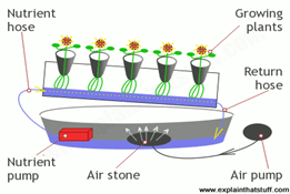
Benefits of Hydroponic Technique:
- There is no need for soil.
- Water is retained in the system and may be reused, resulting in water conservation.
- Nutritional levels are regulated, resulting in lower nutritional requirements and expenses.
- The regulated hydroponic environment guarantees that no nutrients pollute the environment.
- With large yields, plants are healthier.
- Because the container is mobile, pests and infections may be readily managed.
- Harvesting is simple and takes less time.
- Hydroponic plants are healthier to eat.
- Plants don’t need to establish extensive root systems since they have direct access to nutrients.
- Pesticides will cause no harm.
Why Do We Grow Plants Hydroponically?
Sometimes the benefits regarding hydroponics are questioned. There are many advantages of growing plants without soil because many times growers get the best yield and result by using this method. Plants get sufficient nutrients by this method rather than other conventional methods.
The plants dip their roots in the nutrient solution, they directly get what they need so they develop a shallow root system and can divert energy directly into stem and leaf for proper growth. You can also grow plants by the hydroponics method in a limited area.
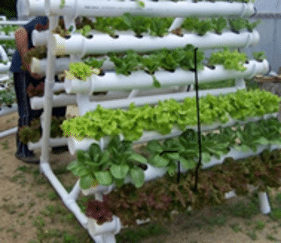
There are more advantages let’s discuss in detail:
I. Hydroponics extends the growing season:
Cold temperature, chilled winters, and shorter days can also affect plant growth. But using a hydroponic plant system, a grower can easily grow a plant throughout the year by controlling the temperature, sunlight, and nutrient supply.
II. Plants Can Be Grown Anywhere:
Many traditional gardens require a proper place and area for the growth of plants, but in this system, there is no proper place required. We can grow plants anywhere in the house without any hurdle with the help of the hydroponic system. We can also shift the whole system from one place to another.
III. Lesser Water Usage:
Although hydroponic systems rely on water to produce plants, they consume 80 to 90% less water than plants grown in the ground. To provide enough moisture to reach the root zone in traditional gardening, a considerable amount of water is supplied to the soil. Water evaporates as it moves through the soil, and only a small portion of it reaches the roots. In hydroponics, the water enters the roots almost quickly, with negligible evaporation. In many systems, the nutrient solution is recirculated several times before becoming useless and being dumped, increasing water efficiency even more.
IV. Fewer Pest Problem:
Many pests are found in a soil medium, but we are doing this procedure without any soil, so the medium will be more hygienic to avoid soil borne pests. These systems are located mostly indoors so there is very little chance for such types of pest attacks.
V. Easy to Harvest the Plants:
The plants which are grown through hydroponics are mostly grown on tables, benches, etc. which puts them to the waist height for many growers. The mature and ripe fruit and vegetables are easy to pluck at this height. It’s an important advantage for home gardeners with limited mobility, and they can harvest without any difficulty.

Some Disadvantages of Hydroponics:
I. Expensive Method:
A hydroponics system is more expensive to buy and install than a regular garden. The cost of a system varies, depending on its type and size, as well as whether it is prefabricated or constructed using individual components to create a unique design.
II. Constant Monitoring and Maintenance:
Hydroponics needs careful monitoring and micromanagement than the traditional plant cultivation. All system components, including lighting, temperature, and several characteristics of the nutrient solution, such as pH and electrical conductivity, require continual monitoring to create a precisely regulated growth environment. To avoid accumulation and clogging, the nutritional solution must be drained and changed regularly, and the system parts must be cleaned often.
III. Waterborne Diseases:
Waterborne infections are far more common in hydroponically grown plants since they are cultivated in water rather than soil. Because water is constantly circulated throughout the system, diseases can quickly spread across the entire growing system, harming the entire collection of plants. A waterborne illness can destroy all of the plants in a hydroponics system in a few hours in extreme situations.
IV. Problems affect Quicker:
Soil protects roots from drastic temperature fluctuations, inhibits the spread of diseases and pests, and releases and absorbs nutrients regularly. Because there is no soil to act as a buffer, plants produced in hydroponics systems react considerably faster to some issues, such as nutritional shortages and disease.
The Two Basic Types of Hydroponics Systems:
A. Ebb and flow system:
In the Ebb & Flow System, flooding of the grow-tray with the nutritious solutions for a brief period is ensured before emptying it back into the reservoir. This is usually accomplished with the use of a submersible pump, controlled by a timer.
The nutrition solution is injected into the grow-tray when the timer activates the pump. When the timer stops the pump, the nutritious solution returns to the reservoir. The timer is set to turn on many times a day, depending on the size and type of plants, the temperature and humidity, and the type of growth material used.
The Ebb & flow system is a flexible system to facilitate a wide range of growth media. Clay pebbles, gravel, or granular rock wool can be used to fill the whole grow tray. Individual pots filled with growth media are popular because they make it easy to move plants about or even move them in and out of the system. Furthermore, the growing medium maintains moisture, allowing for more effective plant development.
B. Drip Irrigation
If you’re using a recovery drip system to grow plants, you will need to be aware of changes in the fertilizer solution’s pH. This is true for any system that reticulates wastewater into the reservoir. Plants will deplete the solution’s nutrient level and alter the pH balance, requiring the grower to monitor and modify the solution reservoir more frequently than in a non-recovery system. Growing mediums can become oversaturated with nutrients and must be cleaned and changed regularly. Drip irrigation is the most used form of hydroponics system in the world. The operation is straightforward, where a submerged pump is controlled by a timer. The timer activates the pump, which drips nutrient solution into the roots of each plant through a tiny drip line. In a Recovery Drip System, the excess nutrient solution is collected and reused in the reservoir. The runoff is not collected by the Non-Recovery System.
Conclusion:
The hydroponic plants can grow significantly higher, and develop more leaves than the plants grown in regular soil due to the continual feeding of nutrients and water. This method has many advantages, such plants are high in nutrition and easy to manage. Hydroponics is a little more expensive than the traditional plantation system, but it can give yield during any time of the year under a controlled environment.

